FSI Analysis for Northrop Grumman RQ-4 Global Hawk, ANSYS Fluent
$150.00 $75.00 Student Discount
- The problem numerically simulates the Fluid-Structure Interaction over Northrop Grumman RQ-4 Global Hawk using ANSYS Fluent software.
- The Global Hawk geometry was modeled using SpaceClaim and then imported into ANSYS meshing for meshing consisting of 5,056,067 non-conformal elements.
- The simulation used a pressure-based solver.
- One way FSI model analyses total strain, and stress over the turbine.
To Order Your Project or benefit from a CFD consultation, contact our experts via email (info@mr-cfd.com), online support tab, or WhatsApp at +44 7443 197273.
There are some Free Products to check our service quality.
If you want the training video in another language instead of English, ask it via info@mr-cfd.com after you buy the product.
Description
Description
This product presents a comprehensive Fluid-Structure Interaction (FSI) analysis of the Northrop Grumman RQ-4 Global Hawk, a high-altitude, long-endurance crewless aerial vehicle (UAV). The study aims to investigate the interaction between the aerodynamic forces and the structural deformations of the UAV using ANSYS Fluent, a powerful multiphysics simulation software. By coupling the fluid dynamics and structural mechanics, this FSI analysis provides valuable insights into the performance and integrity of the RQ-4 Global Hawk under various flight conditions. The results of this study can contribute to the design optimization and safety assessment of the UAV.
Simulation is steady-state and the solver is pressure-based. Also, the gravity force effect is ignored.
You can view the aerodynamic and wing Lift-to-Drag ratio optimization with RBF morph simulation of this product .
Geometry & Mesh
The Global Hawk geometry was modeled using SpaceClaim, a 3D modeling software integrated with ANSYS. The model was then imported into ANSYS meshing for meshing. A boundary layer with six rows was employed to capture the near-wall flow phenomena accurately. The mesh generated consists of 5,056,067 non-conformal elements.
Boundary Conditions and Solver Settings
The simulation used a pressure-based solver, considering air an ideal gas, and the problem is solved in symmetric mode. The UAV surface was modeled as a wall with a no-slip condition and intrinsic FSI. The inlet and far-field boundaries were set as pressure far-field with a Mach number of 0.39 and an angle of attack of 5 degrees, representing the UAV’s operating conditions. The SIMPLE algorithm was used for pressure-velocity coupling, and the solution was initialized using standard initialization.
The Structure model with the Linear Elasticity option was enabled to investigate the displacement of the blades, allowing for the analysis of fluid-structure interaction.
Results
Velocity Magnitude Contour: The velocity magnitude contour illustrates air velocity distribution around the Global Hawk. The red regions indicate the highest velocity is observed near the leading edges of the wings and the tail. The velocity gradually decreases as the air moves towards the trailing edges and the wake region behind the aircraft. The formation of boundary layers and wake regions is evident, providing insights into the flow characteristics around the UAV.
Static Pressure Contour: The static pressure contour from the top view reveals the pressure distribution on the upper surface of the Global Hawk. The high-pressure region (indicated by the red area) is located near the leading edge of the wings, where the air first encounters the aircraft. The green and blue regions show the pressure gradually decreasing towards the trailing edges and the wingtips. This pressure distribution is consistent with the principles of aerodynamics, where the faster-moving air on the upper surface results in lower pressure compared to the lower surface.
Total Displacement Contour: The total displacement contour represents the structural deformations experienced by the Global Hawk due to the aerodynamic forces. The image shows that the wings and tail experience the most significant displacements, with the wingtips and tail edges exhibiting the highest values (indicated by the red and orange regions). The blue regions, primarily the fuselage, undergo relatively smaller displacements. This information is crucial for assessing the structural integrity and performance of the UAV under various flight conditions.
The von Mises stress contour reveals the stress distribution on the Northrop Grumman RQ-4 Global Hawk during the FSI analysis. The highest stress values, indicated by the red region, are concentrated near the wing root, where the wings connect to the fuselage. This is an expected result, as the wing root experiences the highest bending moments due to the lift forces acting on the wings. The stress gradually decreases towards the wingtips and the tail, as shown by the blue regions.
The high-stress concentration at the wing root highlights the importance of structural reinforcement in this area to ensure the UAV’s integrity under various flight conditions. The von Mises stress distribution provides valuable information for designers and engineers to optimize the aircraft’s structure, particularly in critical areas such as the wing root, to minimize the risk of structural failure.
Furthermore, the von Mises stress contour can be used to identify potential areas of fatigue and crack initiation, as high-stress regions are more susceptible to these issues over time. By analyzing the stress distribution, engineers can make informed decisions about material selection, structural reinforcement, and maintenance schedules to ensure the long-term reliability and safety of the Global Hawk.
Conclusion
the FSI analysis conducted using ANSYS Fluent provided valuable insights into the UAV’s aerodynamic performance and structural behavior under various flight conditions and demonstrated the significance of coupled fluid-structure simulations in the design, optimization, and performance assessment of high-altitude, long-endurance UAVs like the Northrop Grumman RQ-4 Global Hawk.
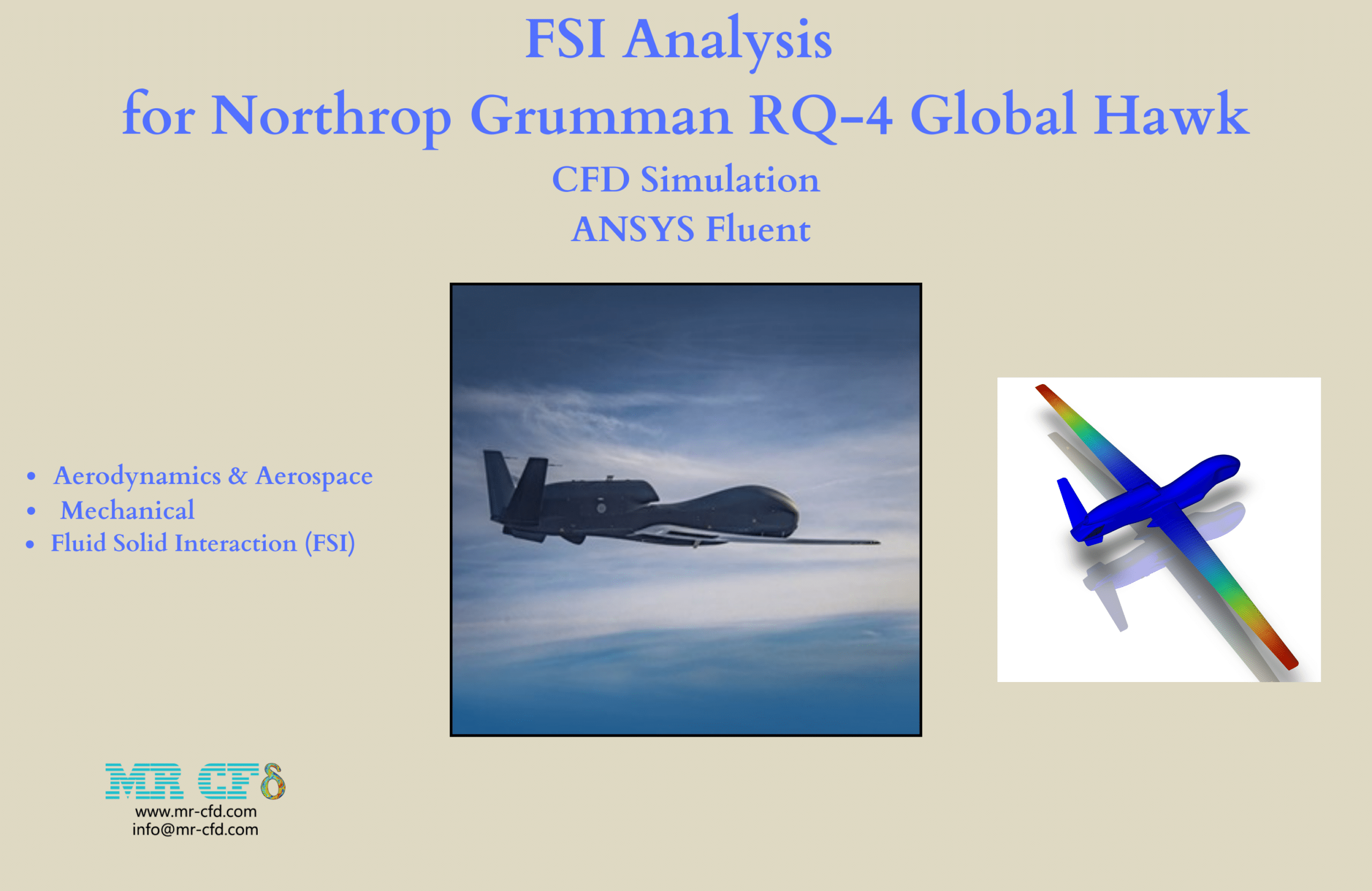

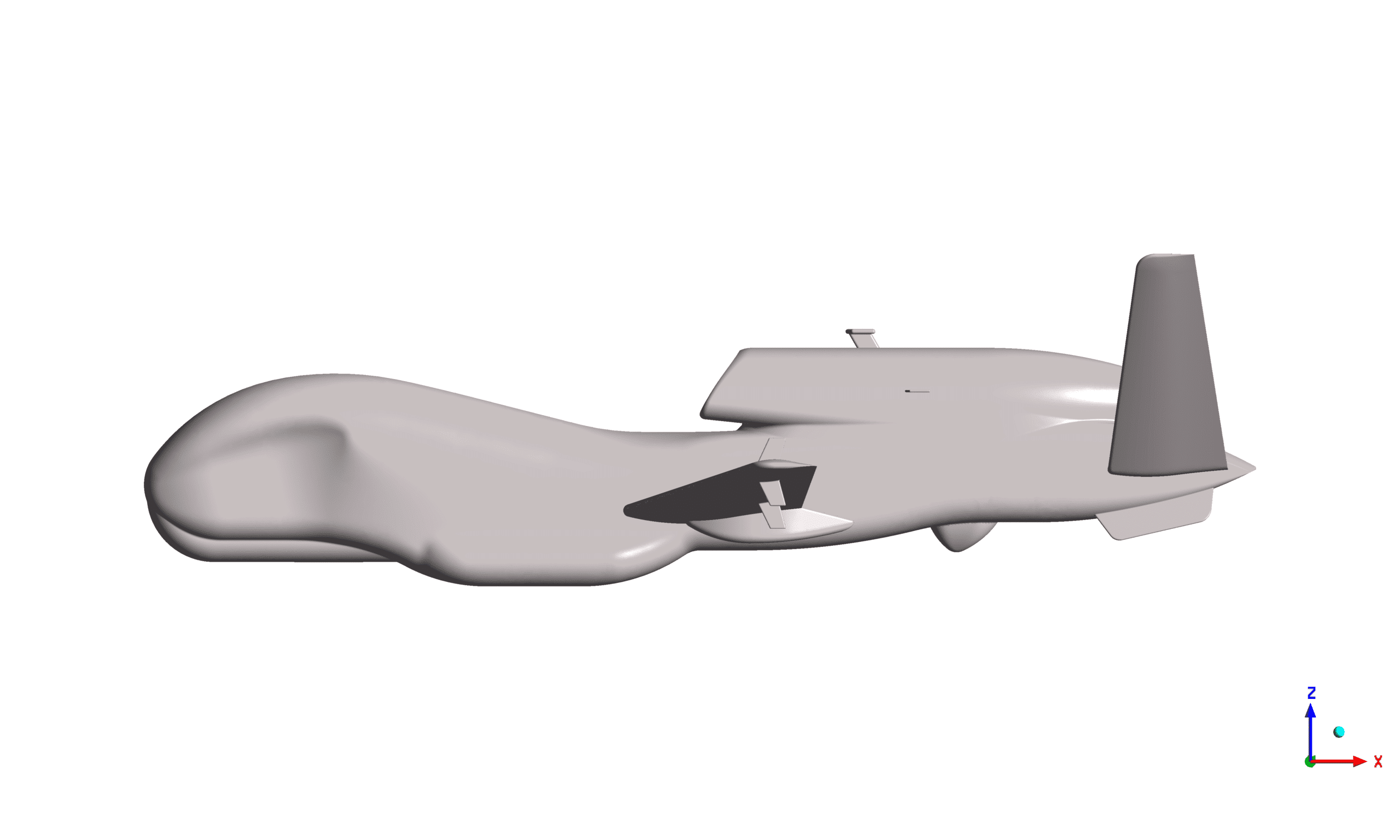
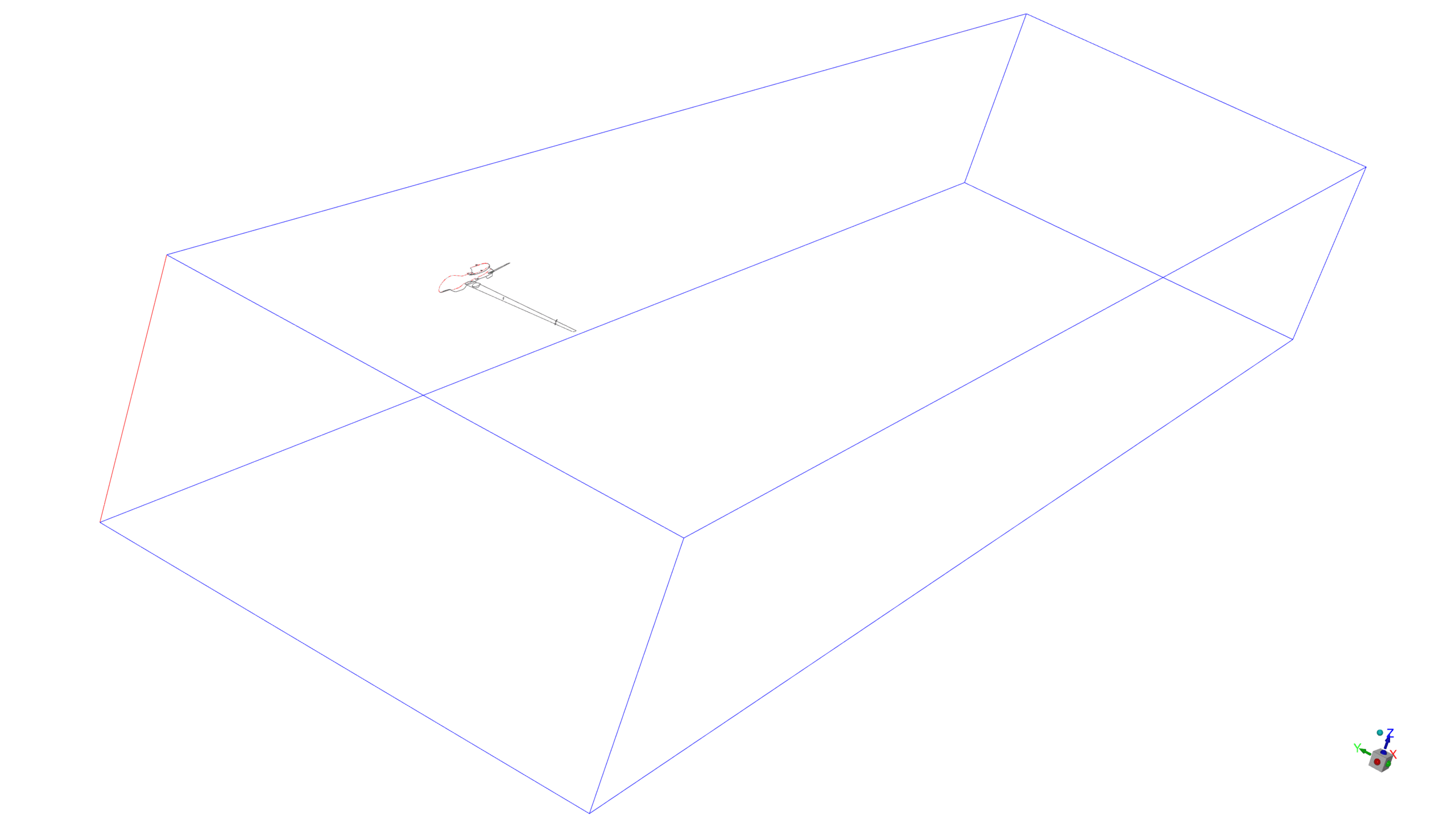
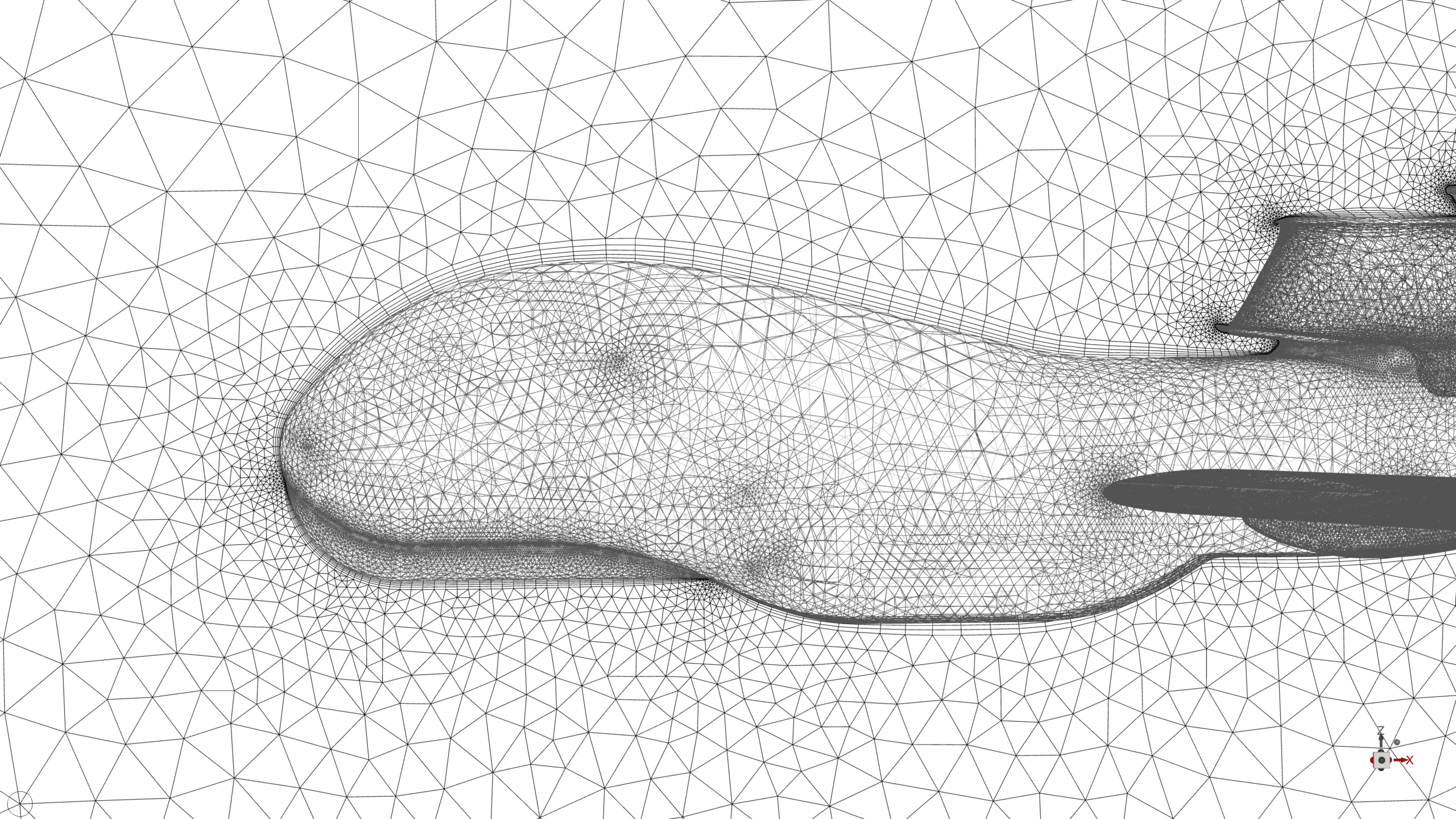
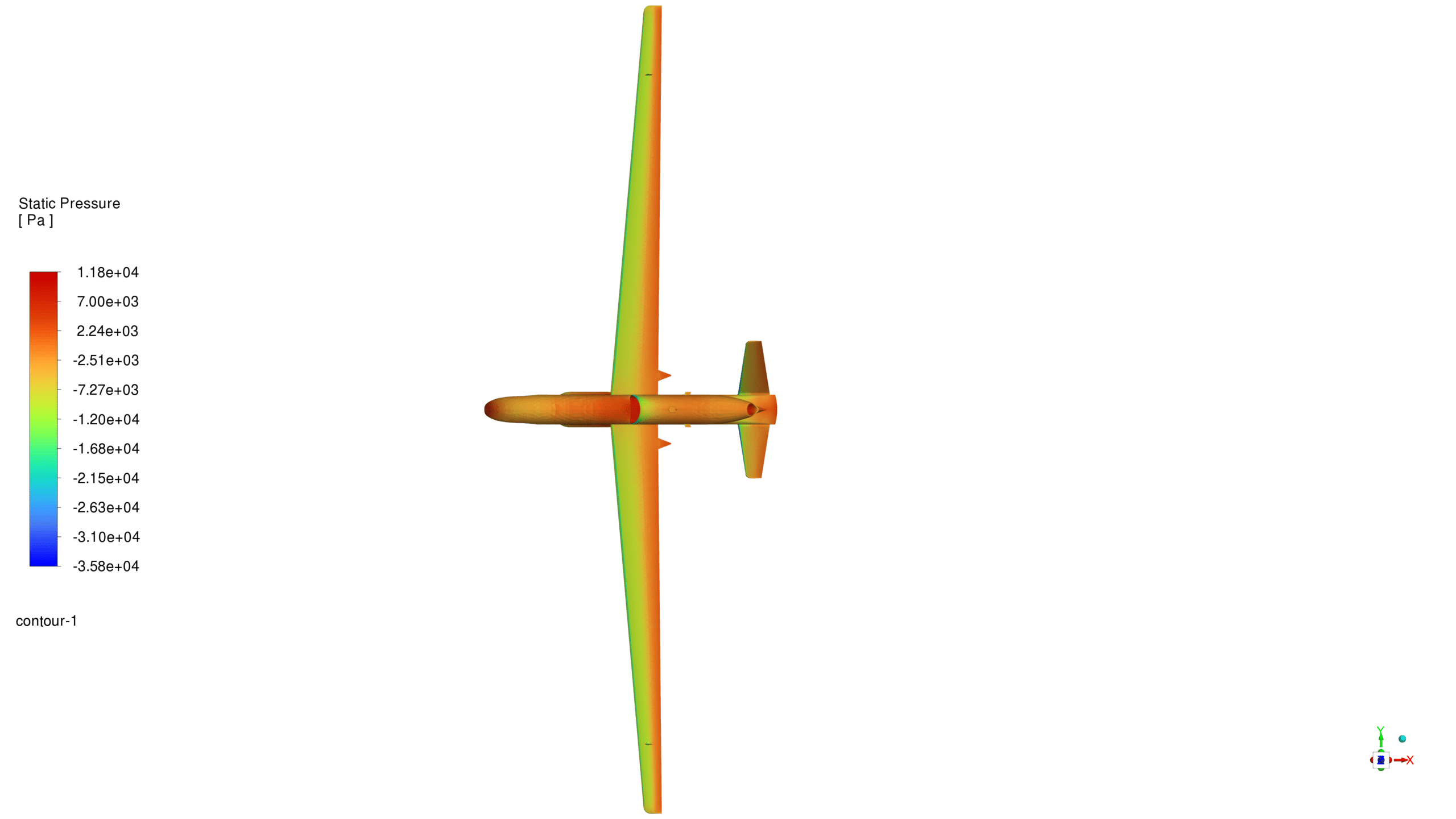
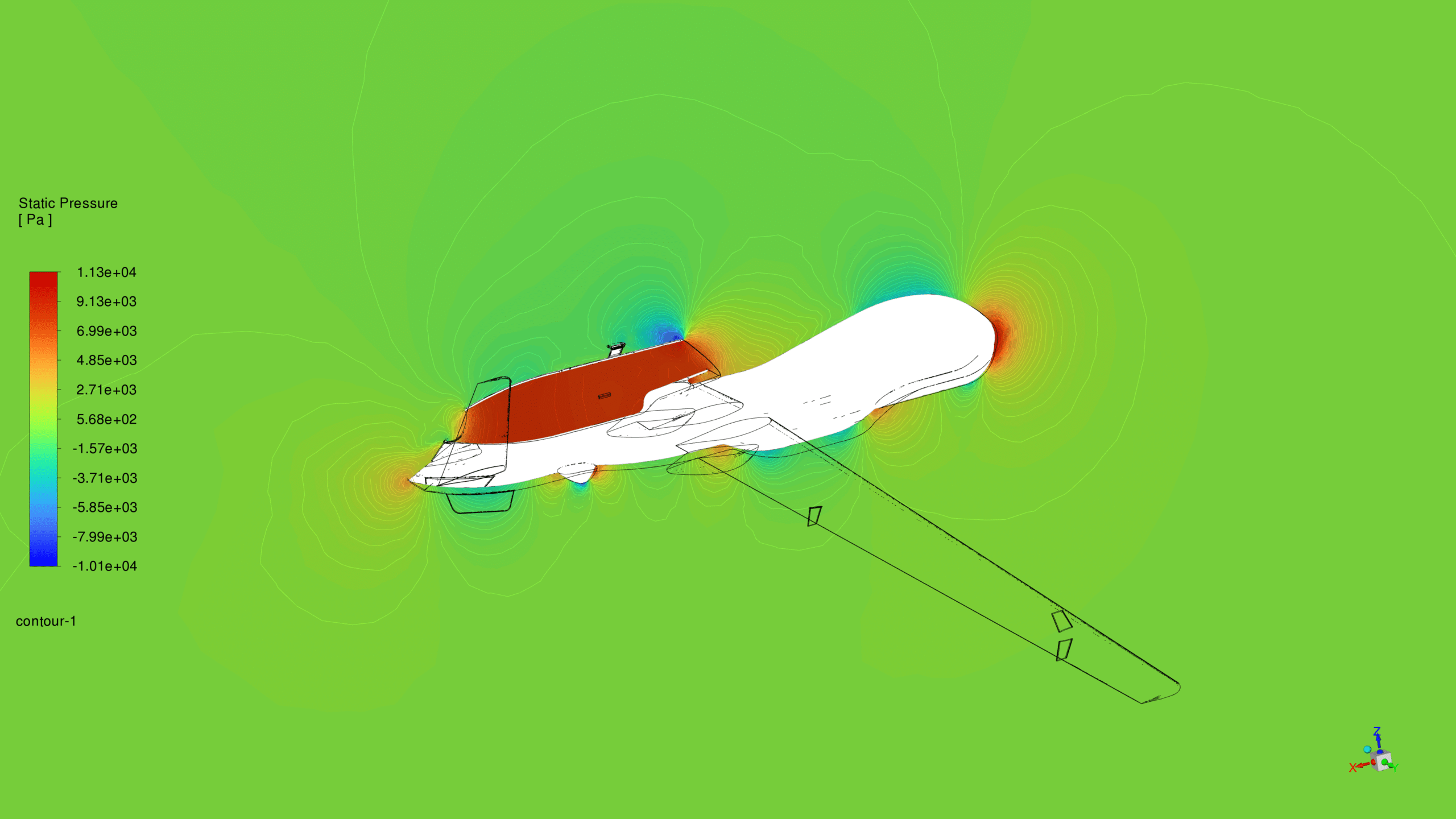
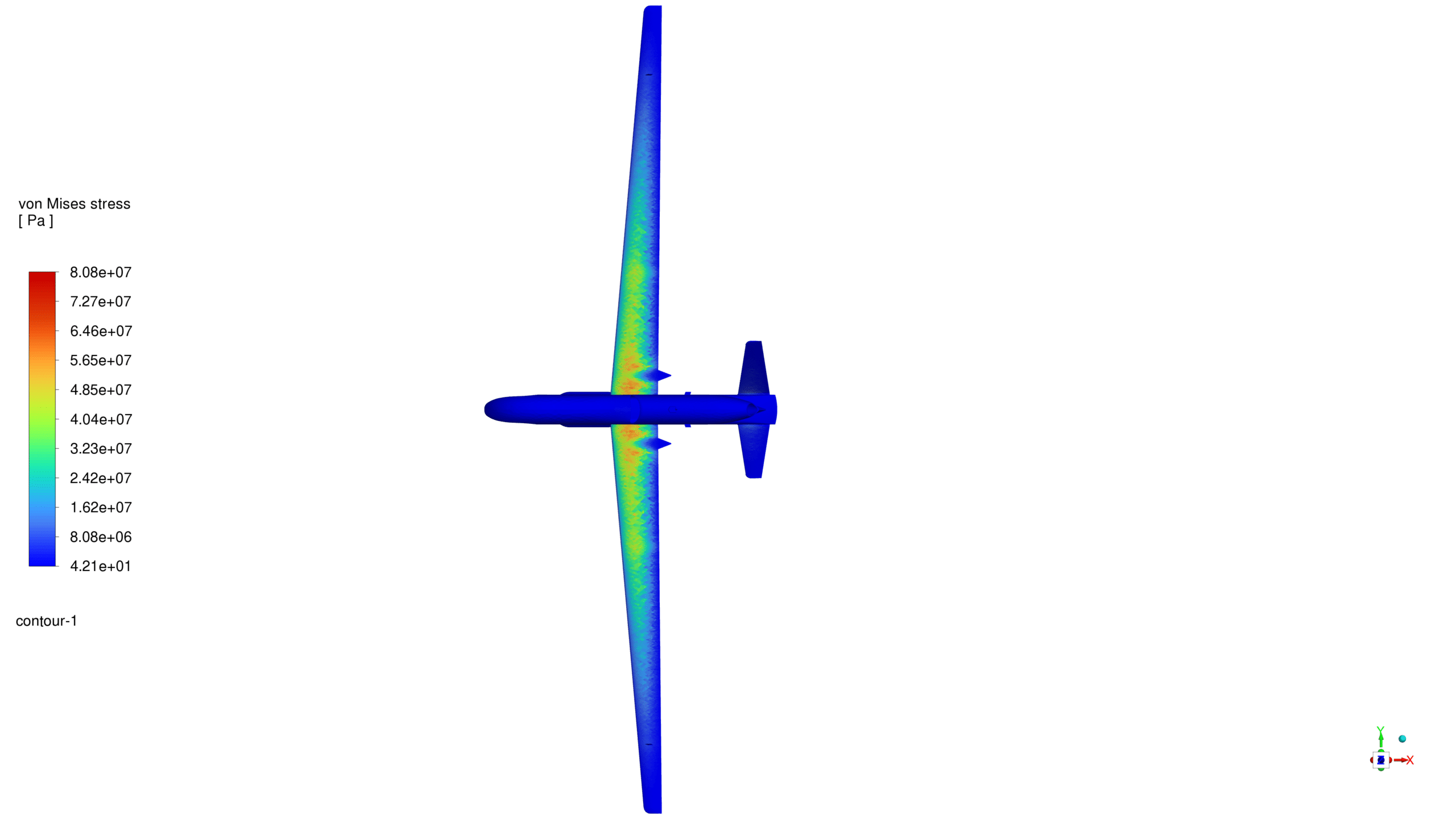
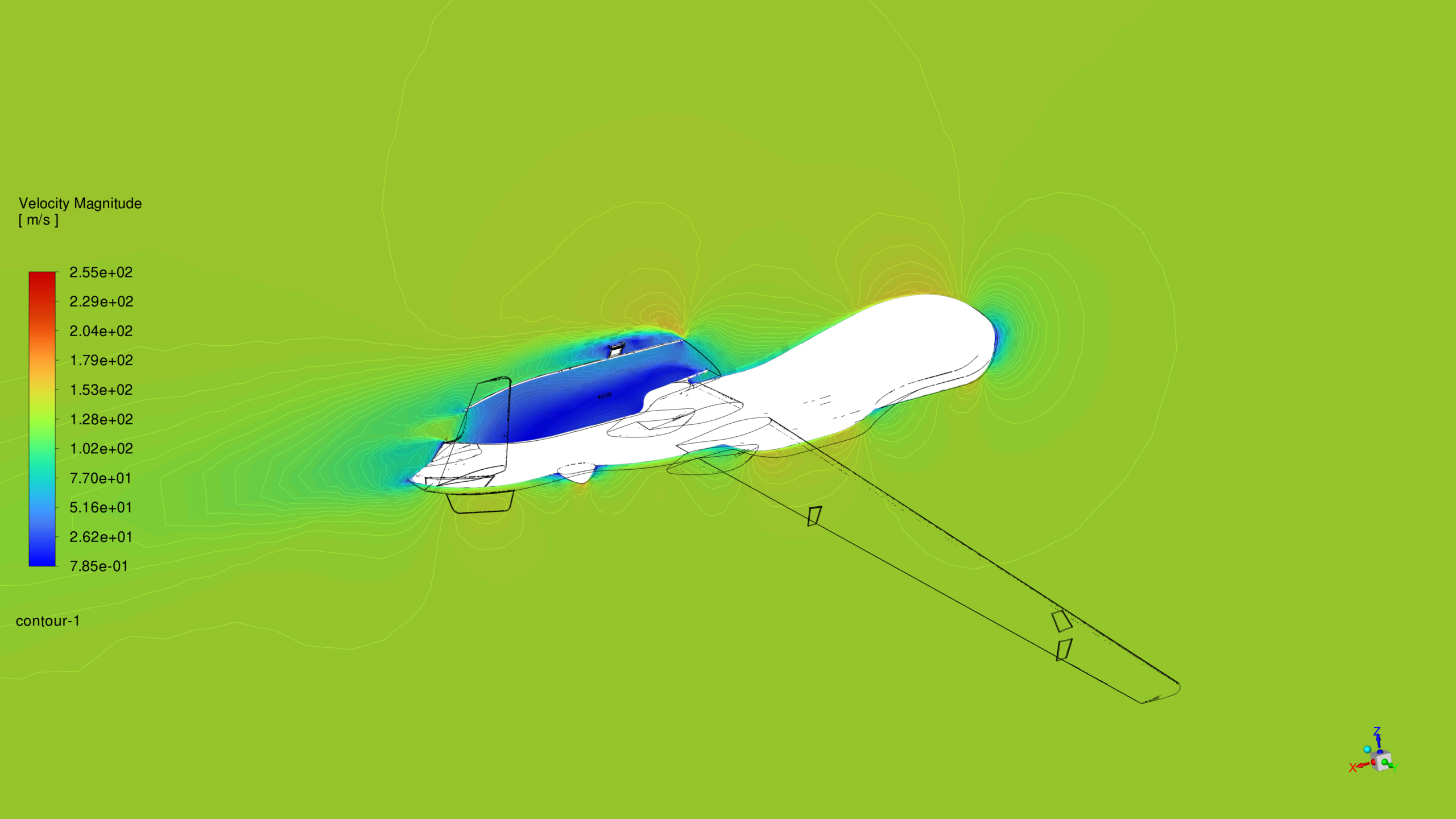

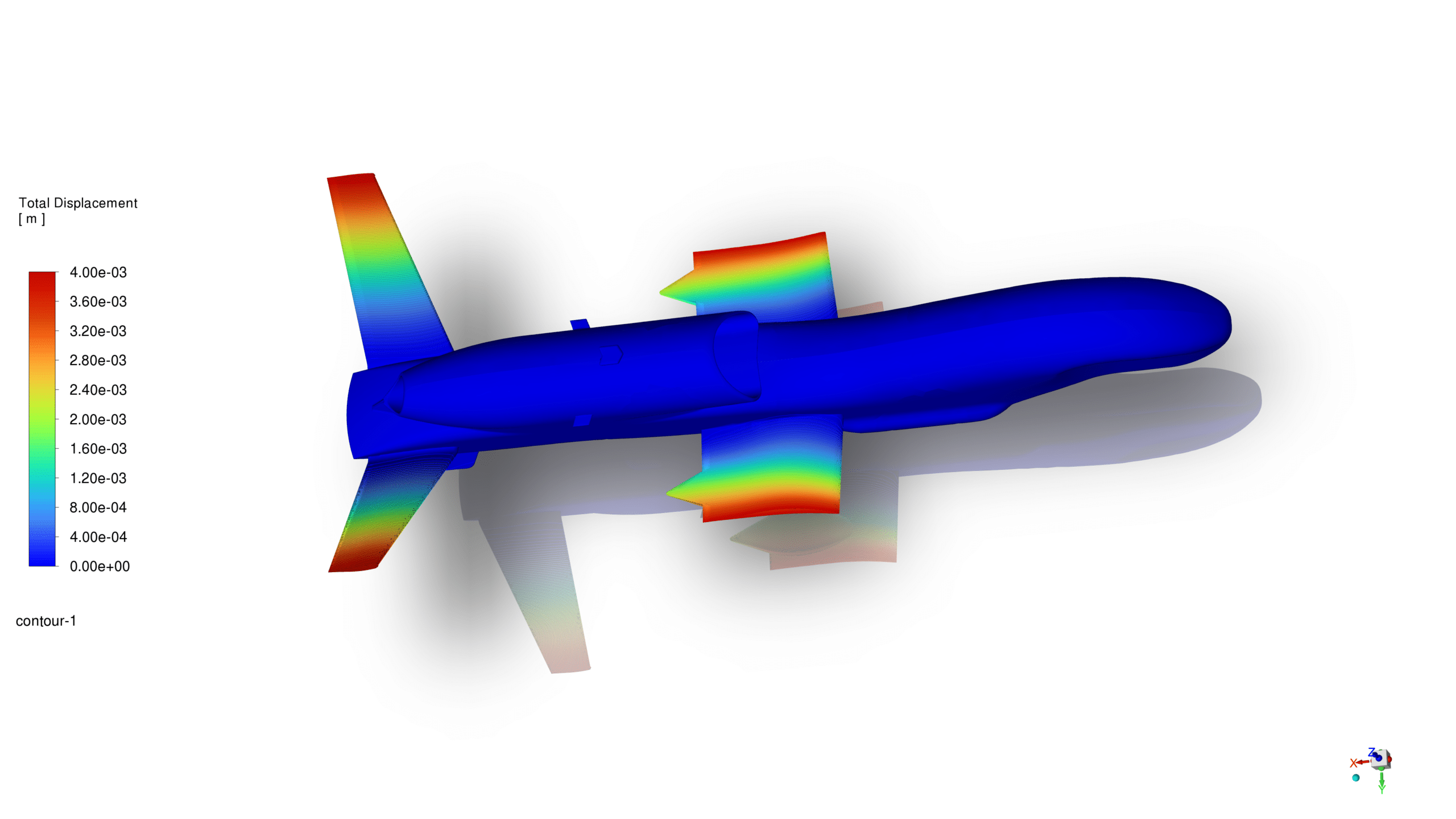


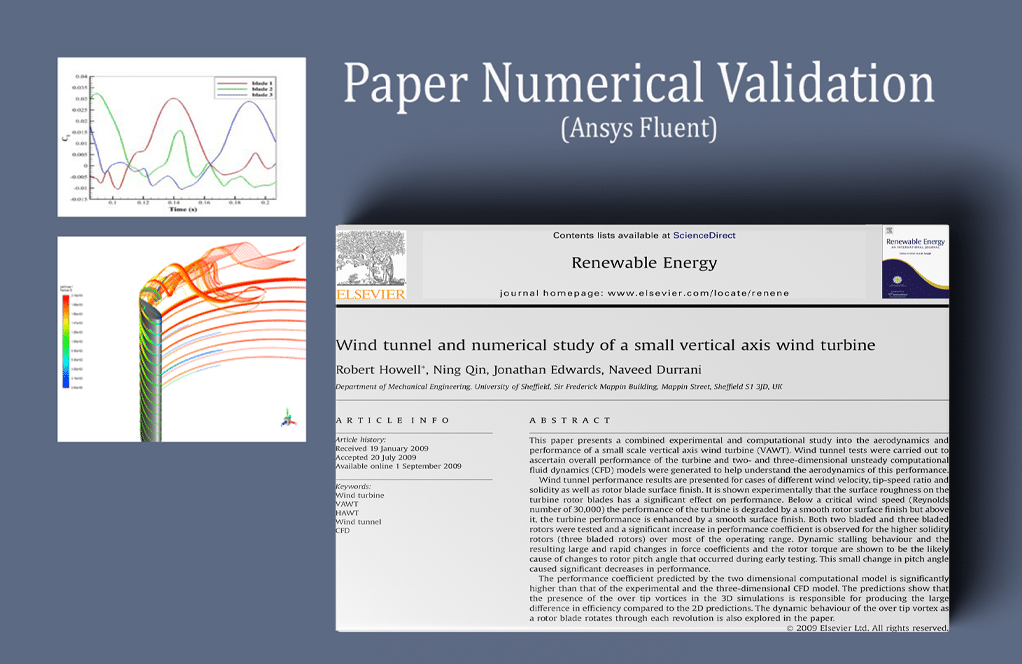
Reviews
There are no reviews yet.